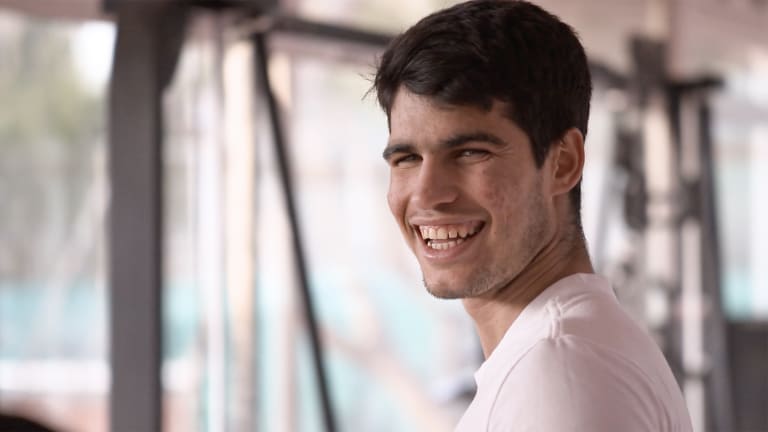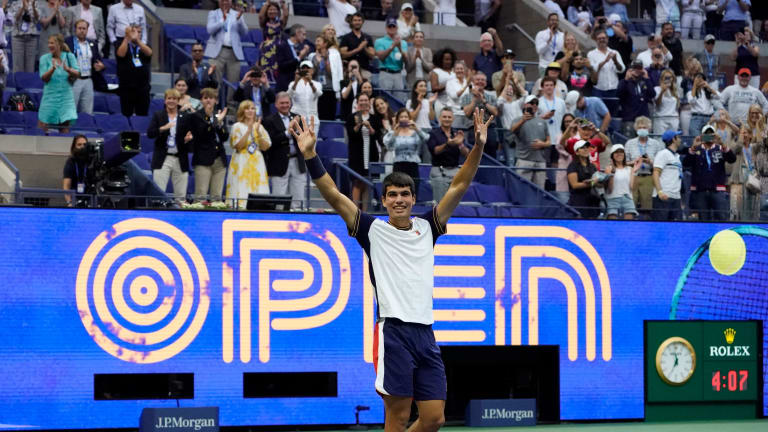Tennis.com Interview
Carlos Alcaraz: No longer an outsider looking in
By Jan 17, 2022Tennis.com Interview
Nick Kyrgios brings the show, and new perspective, to Madison Square Garden
By Dec 08, 2025Tennis.com Interview
After longest off-season ever, Tommy Paul talks injury comeback, wedding plans at MSG
By Dec 08, 2025Tennis.com Interview
Following in family footsteps, Elli Mandlik clinches Australian Open return in wild card play-off
By Nov 25, 2025Tennis.com Interview
Ben Johnson 101: How an Instagram auteur is defining modern tennis lifestyle
By Nov 11, 2025Tennis.com Interview
Patrick Kypson, former college teammate of Rinderknech and Vacherot, is writing his own perseverance story
By Oct 28, 2025Tennis.com Interview
Michael Zheng channels Ivy League balancing act into rapidly blossoming pro tennis future
By Oct 21, 2025Tennis.com Interview
Flavio Cobolli wants to earn Davis Cup Finals nomination—and stay on as ATP's 'admin'
By Oct 16, 2025Tennis.com Interview
With IMG Academy backing, Wakana Sonobe kicks off pro career at home in Osaka
By Oct 16, 2025Tennis.com Interview
Alex Michelsen wins Almaty debut to end losing skid, reveals coaching trial with Kristof Vliegen
By Oct 15, 2025Carlos Alcaraz: No longer an outsider looking in
The 18-year-old comes into 2022 on the back of a breakthrough season, and began his next chapter Monday at the Australian Open—with a straight-set win.
Published Jan 17, 2022
Advertising
Advertising

Alcaraz went 32-17 in 2021, the youngest ATP player to record that many season wins in 29 years.
© Tennis Channel
Advertising

"I’m really happy to know that the people around the world are following you, supporting you. I think that I have a game that the people want to see on the court. So I’m really happy to progress with the fans and everything," he says.
© AFP via Getty Images